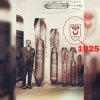Akon, Hi!
There is already a thread where these photos and other were uploaded
http://www.bocn.co.uk/vbforum/threads/92857-Turkish-Bombs-1937-1939?highlight=Turkish
The whole issue of the Turkish bombs produced by the Sakir Zumre factories in the 20s and 30s is complex as it is obstructed by a lot of "urban legends" and "political recuperation" in the environment of present days Turkish politics.
A few years ago a book was published in Turkey (in Turkish) by the a Turkish historian named Atila Oral - with a lot of "problematic" information inside but it included scans from the original Sakir Zumre bomb catalog from 1938. The book is sadly out of print and I have been unable to put a hand on a copy though I tried very hard (and keep trying) to do so. I tried to get into contact with author but sadly he died suddenly one year ago, at a relatively young age.

A Turkish contact sent me scans of the relevant pages but they are of low quality and do not enable to read the mensurations of the bombs or most details of the text. However the drawings show details of the bombs and the fuzes and are worth it:
1) 6kg incendiary

2) 6kg flare (a copy of a ww1 Italian flare):

3) 10kg HE

4) 50kg SAP

5) 100kg SAP

6) 300kg SAP

7) ? probably 100 HE

Better Resolution photographs from this book:









and from other sources (Turkish antique auctions and similar):




Fuzes:
1) 10kg Nose Fuze


2) 50kg Nose Fuze


3) 100kg Nose Fuse


3) 100kg Base Fuse

4) 300kg Base Fuse

The 50kg and 100kg existed in nHE and SAP variants
The 300kg in SAP and apparently also AP variants
The main problem of these bombs was the fins: aimed at giving a spinning effect they suffered from the inherent problem of this system - the deformation of the fins during the fall (and seeing the photographs during their stocking too!) The tentative to add a reinforcing circle (similar to the patent on the Swedish Bofors bombs of the time) do not appear to have been really successful, as it was too flimsy built. The huge solid collar seen at the base of the fins on one of the last bombs (probably the 300kg AP) seems to have been also aimed at solving this problem. However these bombs were ill-fated, produced at a time where planes began to fly faster and higher, thence high torsion moments on the fins of spinning bombs that provokes their rupture during the fall - even the anti-torsion pattern installed on Bofors/Tolfvan bombs was not really a success and led to the end of the use of this system.
In addition the new planes bought in the late thirties by thr Turkish Air Force came with their own supplies of bombs:
US M30 series of bombs for the Martin W139 and the Vultee V-11, British GP series for the Fairey Battle and German B1, Sc 10, Sc50 and Sc250 for the He111
These last German bombs were even produced in Turkey by the factory established by Nuri Kiligil (the brother of Enver Pasha and an active agent of Nazi Germany in Turkey)


Vulltee V-11 with US M30 series bomb

If soemeone has more details on the dimensions of these bombs, please post - same if you have a copy of the book by Atilla Oral or the original Zumre catalog and can make better scans (BTW the books seems to have been distributed to almost every public library in the main cities of Turkey, so if someone passes through Istanbul Izmir or Ankara with a good cell phone camera...:angel

.













































